1 引 言
2 研究方法
2.1 数据来源
2.2 分析手段
3 文献计量学分析
3.1 土壤改良文献发表趋势
图1 1990—2024年土壤改良领域年度发文量和发文趋势Fig. 1 Annual publication output and evolving publication trends in the field of soil improvement from 1990 to 2024 |
3.2 关键词
3.2.1 领域研究热点
图2 有关土壤改良研究的英文文献中出现5次以上关键词的共现网络图Fig. 2 Visualization of the co-occurrence network for keywords appearing with a frequency of five or more in English literature |
3.2.2 关键词发展历程
图4 英文文献土壤改良主要关键词时间演变趋势Fig. 4 The temporal evolution and trend analysis of key terms associated with soil improvement in English literature |
4 研究进展及讨论
4.1 土壤改良手段
4.2 土壤改良对土壤质量的影响
4.3 土壤改良对土壤有机碳的影响
表2 土壤改良对土壤有机碳含量影响Table 2 Effects of soil improvement on Soil Organic Carbon (SOC) content |
| 改良方案 | 有机碳含量 | 研究结论 | 参考文献 |
|---|---|---|---|
| 生物炭0 mg/hm2(0~15 cm) | 43.975 mg/kg(DOC) | 生物炭的长期添加显著提高了土壤中有机碳含量,土壤DOC的增量与生物炭添加量成正比 | [77] |
| 生物炭0 mg/hm2(15~30 cm) | 48.945 mg/kg(DOC) | ||
| 生物炭30 mg/hm2(0~15 cm) | 47.289 mg/kg(DOC) | ||
| 生物炭30 mg/hm2(15~30 cm) | 48.795 mg/kg(DOC) | ||
| 生物炭60 mg/hm2(0~15 cm) | 50.904 mg/kg(DOC) | ||
| 生物炭60 mg/hm2(15~30 cm) | 53.313 mg/kg(DOC) | ||
| 生物炭90 mg/hm2(0~15 cm) | 51.506 mg/kg(DOC) | ||
| 生物炭90 mg/hm2(15~30 cm) | 56.024 mg/kg(DOC) | ||
| 未施肥对照 | 3 770 mg/kg(SOC) | 15年的对比实验证明,化肥和有机肥的施用均可提高潮土有机碳含量,且有机肥对土壤有机碳提高效果更佳 | [75] |
| NPK无机肥 | 5 280 mg/kg(SOC) | ||
| 1/2有机肥 | 6 630 mg/kg(SOC) | ||
| 全有机肥 | 8 100 mg/kg(SOC) | ||
| 未施肥对照 | 11.4 mg C/hm2(SOC) | 实验证明堆肥能够有效提高SOC含量,秸秆还田对SOC含量影响较小 | [76] |
| NPK无机肥 | 15.9 mg C/hm2(SOC) | ||
| N-堆肥 | 23.7 mg C/hm2(SOC) | ||
| 1/2无机肥+1/2N-堆肥 | 23.5 mg C/hm2(SOC) | ||
| 无机肥+秸秆 | 16.6 mg C/hm2(SOC) | ||
| N-堆肥+秸秆 | 19.5 mg C/hm2(SOC) | ||
| 未施肥对照 | 2 730 mg/kg(SOC) 51.06 mg/kg(DOC) | 生物炭的长期添加显著提高了土壤中SOC含量,但无机碳与玉米秸秆的改良方案积累的含量最高 | [78] |
| 无机肥 | 3 940 mg/kg(SOC) 70.21 mg/kg(DOC) | ||
| 无机肥+玉米秸秆 | 5 910 mg/kg(SOC) 118.09 mg/kg(DOC) | ||
| 无机肥+秸秆生物炭 | 8 030 mg/kg(SOC) 75.53 mg/kg(DOC) |
|
4.4 土壤改良对土壤碳储存和碳排放的影响
4.5 土壤改良对岩溶作用及其碳汇效应的影响
4.5.1 土壤改良加速岩溶作用
图7 岩溶区土壤改良影响岩溶作用模式图岩溶区土壤改良影响包括:①促进作物生长,并降低因土壤呼吸而产生的CO2排放量;②土壤团聚体间间隙增大,有助于土壤中水、肥、气的协调与贮存;③提高土壤中有效营养元素含量,进一步增强岩溶区土壤碳储量及土中微生物活性;④加速土壤矿化作用,提升作物根呼吸及土中微生物呼吸速率,使土壤CO2浓度上升;⑤基于表层土壤中CO2浓度的提高,土—岩界面及基岩处发生的岩溶作用反应速率加快,提高了地下水中钙镁离子和溶解无机碳的含量。 Fig. 7 Schematic diagram of the impact of soil improvement practices in karst regions on karstification dynamics The effects of soil improvement in karst regions encompass the following aspects: ① Enhancing crop growth while mitigating CO2 emissions from soil respiration; ② Expanding inter-aggregate pore spaces, thereby facilitating the balance and retention of water, nutrients, and air within the soil matrix; ③ Elevating the concentration of bioavailable nutrients, which further augments soil carbon sequestration capacity and microbial activity in karst soils; ④ Accelerating soil mineralization processes, leading to increased root respiration rates in crops and heightened microbial respiration, consequently elevating soil CO2 concentrations; ⑤ With the rise in CO2 levels in surface soils, the rate of karstification reactions at the soil-rock interface and within bedrock is expedited, resulting in elevated concentrations of calcium and magnesium ions as well as dissolved inorganic carbon in groundwater. |




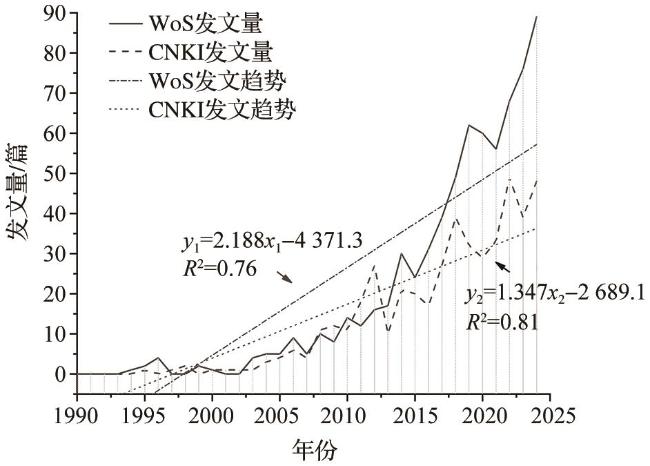
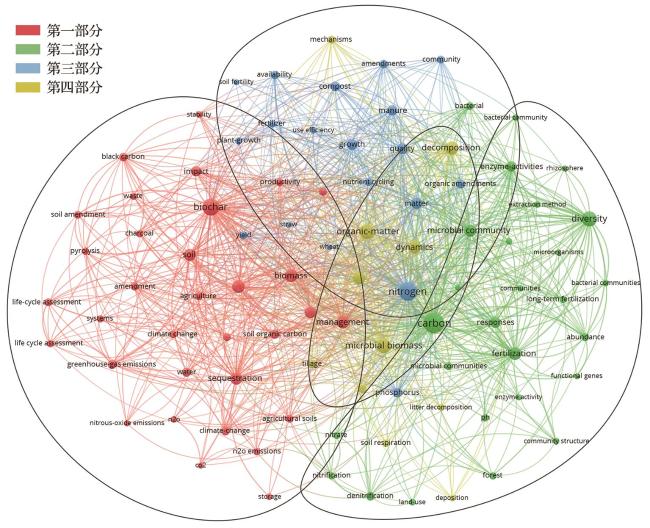
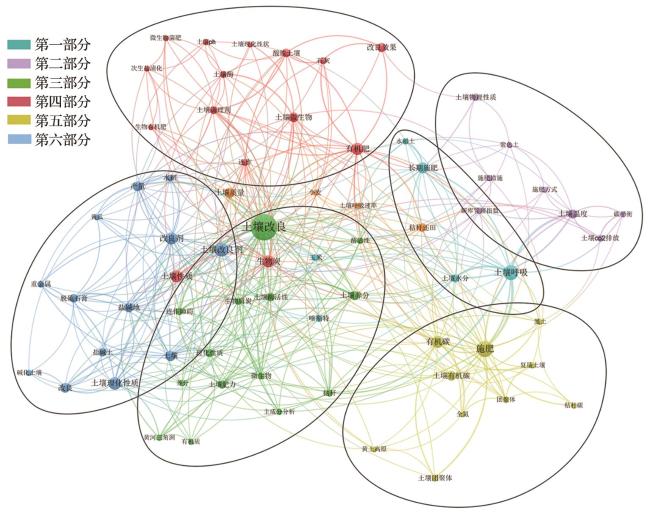
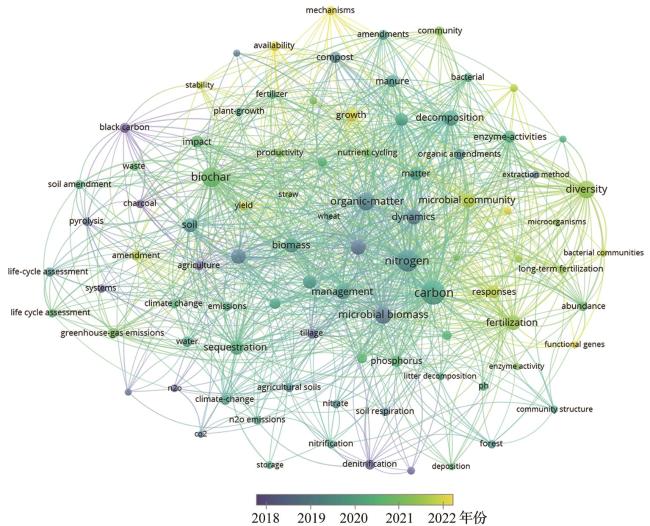
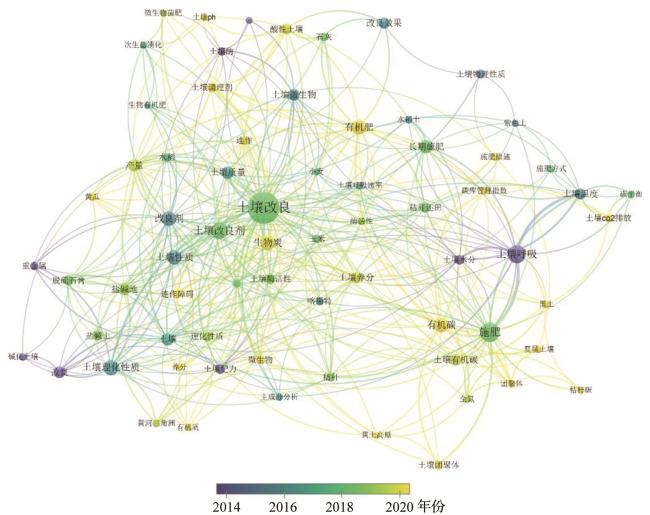
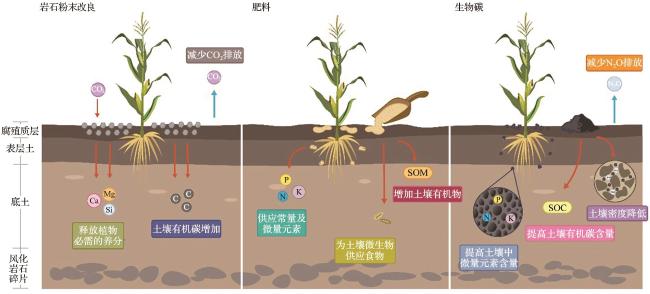
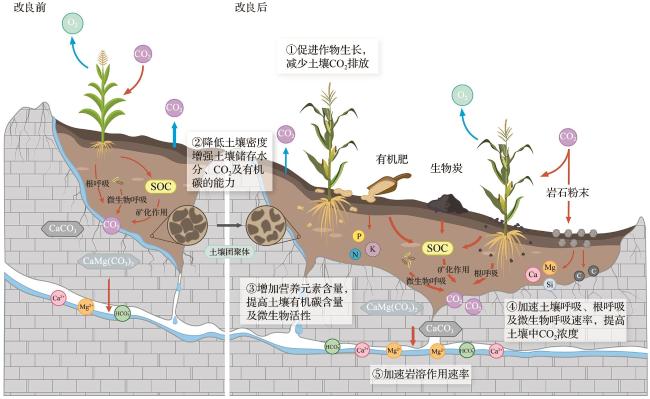

 甘公网安备62010202000687
甘公网安备62010202000687